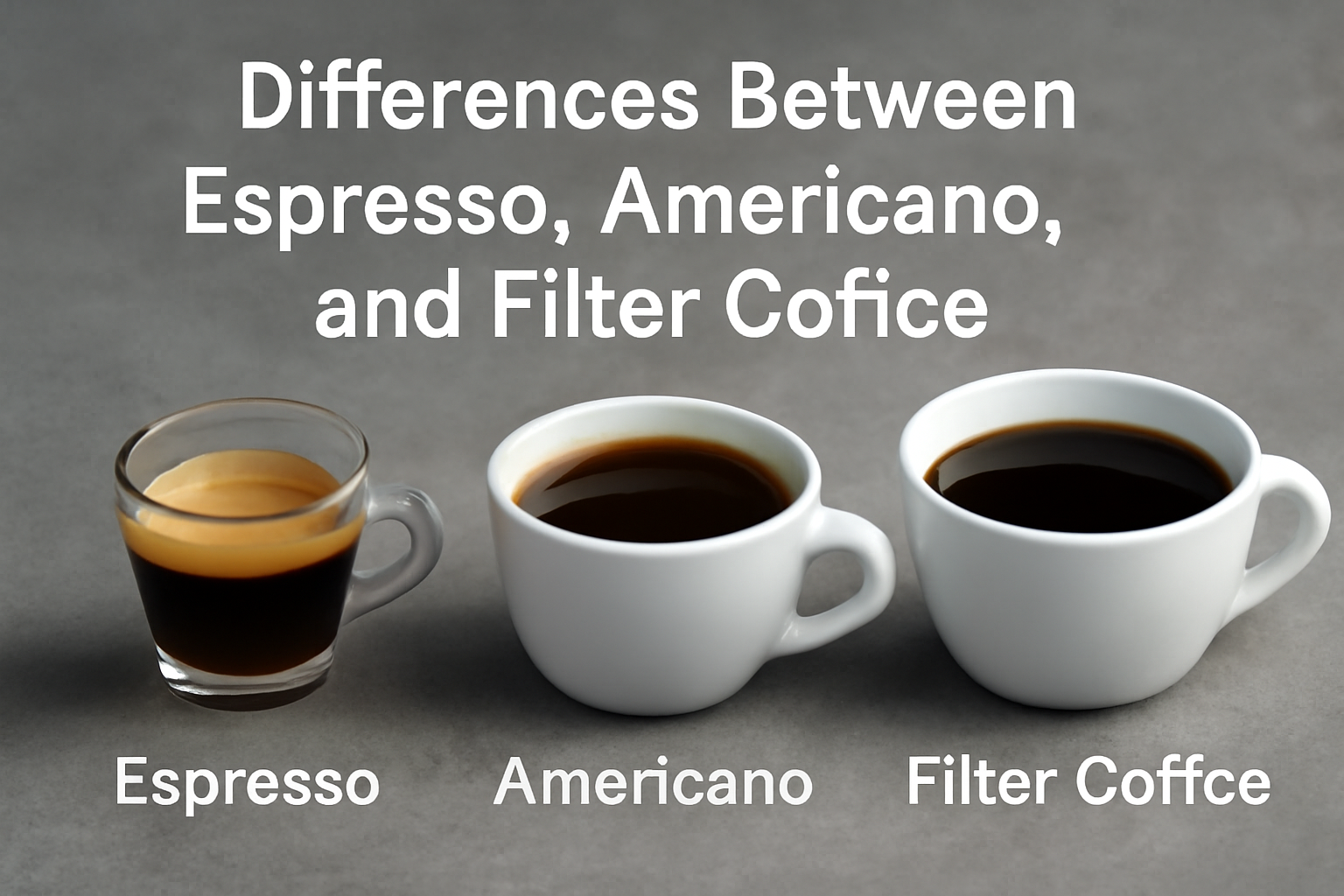Understanding the differences between espresso, Americano, and filter coffee is essential for coffee enthusiasts and professionals alike. Each of these coffee styles offers a unique flavor profile, brewing method, and experience that caters to different preferences and occasions. This detailed guide will explore the distinctions between espresso, Americano, and filter coffee, diving into their brewing techniques, taste characteristics, caffeine content, and ideal serving methods. By the end of this article, you’ll have a clear understanding of which coffee suits your palate and how to enjoy each one to its fullest potential.
Espresso is a concentrated coffee beverage brewed by forcing hot water through finely-ground coffee under high pressure. This process extracts intense flavors and produces a thick, rich shot topped with a creamy layer called crema. Espresso is the foundation for many coffee drinks like lattes, cappuccinos, and macchiatos. It is typically served in small volumes, ranging from 25 to 30 milliliters per shot, due to its high concentration and bold taste.
Americano, on the other hand, is essentially an espresso diluted with hot water. The result is a coffee similar in strength to drip or filter coffee but retains the distinct espresso flavor. Americano is often preferred by those who want the espresso taste but with a lighter body and larger serving size. The typical preparation involves pulling a shot of espresso and then adding hot water in a 1:2 or 1:3 ratio, depending on preference.
Filter coffee, also known as drip coffee, is brewed by allowing hot water to slowly pass through medium to coarsely ground coffee, usually held in a paper or metal filter. This method extracts flavors more gently and produces a cleaner, lighter-bodied coffee compared to espresso. Filter coffee is served in larger volumes, typically 200 to 300 milliliters, and is known for highlighting the subtle nuances of coffee beans, such as fruity, floral, or nutty notes.
One of the primary differences between these coffee types lies in the brewing time and pressure. Espresso is brewed quickly under about 9 bars of pressure, usually taking 25 to 30 seconds. This rapid, pressurized extraction pulls out oils, acids, and solids that create a dense, flavorful shot. Americano inherits this quick brewing process for the espresso base but extends the volume by adding hot water. Filter coffee uses gravity and a slower drip process that takes several minutes, often between 3 to 5 minutes, resulting in a lighter extraction.
Grind size is another key factor differentiating these methods. Espresso requires a very fine grind to allow water to pass through at the right rate under pressure. Americano uses the same finely ground espresso base. Filter coffee uses a medium to coarse grind, suitable for slower extraction and preventing over-extraction or bitterness.
The taste profiles of these coffees differ significantly. Espresso has a bold, intense flavor with a balance of sweetness, bitterness, and acidity concentrated in a small volume. It often has a syrupy mouthfeel and a complex aroma due to the crema. Americano offers a milder flavor with less intensity but retains some of the espresso’s rich notes, making it smoother and more approachable for those who find straight espresso too strong. Filter coffee delivers a lighter body with more clarity and brightness, allowing the unique characteristics of the coffee beans to shine through without the intensity of espresso.
Caffeine content varies between these drinks but is often misunderstood. Despite espresso’s strong taste, a single shot contains about 63 milligrams of caffeine, while an Americano, depending on dilution, can have similar caffeine levels as a single or double espresso. Filter coffee, served in larger volumes, typically contains more caffeine overall, roughly 95 to 200 milligrams per 8-ounce cup, depending on the brewing method and coffee dose.
Serving styles also differ. Espresso is served in small demitasse cups to concentrate aroma and flavor. Americanos are served in larger cups or mugs, similar to regular coffee. Filter coffee is usually enjoyed in standard coffee mugs or cups, often with cream or sugar added, although many drink it black to appreciate the flavor nuances.
The choice between espresso, Americano, and filter coffee depends on personal taste, caffeine needs, and the desired drinking experience. Espresso is ideal for those who prefer a quick, intense coffee with a rich mouthfeel. Americano suits those wanting a longer, milder drink that still carries espresso’s character. Filter coffee appeals to individuals who enjoy exploring the subtle flavors and complexity of coffee beans in a lighter, more refreshing form.
Understanding these differences helps coffee drinkers appreciate the versatility of coffee and make informed choices whether brewing at home or ordering at a café. Each style brings something unique to the table, reflecting different traditions and preferences in the coffee world. Experimenting with all three allows one to develop a deeper connection with coffee and discover which suits their mood and moment best.
In summary, espresso, Americano, and filter coffee differ fundamentally in brewing methods, grind size, taste profile, caffeine content, and serving style. Espresso is a concentrated, fast-brewed coffee with intense flavors. Americano dilutes espresso with hot water for a smoother, larger drink. Filter coffee uses slow gravity brewing for a cleaner, lighter cup that showcases bean complexity. Knowing these distinctions empowers coffee lovers to savor their preferred brew and explore new coffee experiences with confidence.

